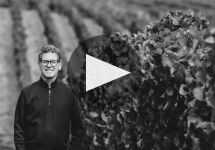Crossbarn Sonoma Coast Chardonnay 2020
-
Robert
Parker -
James
Suckling -
Wine &
Spirits




Product Details
Your Rating
Somm Note
Winemaker Notes
A bright and refreshing Chardonnay bursting with aromas of crisp green apple, white peach, and a touch of citrus blossom. With notes of fresh pear, kumquat, and lime zest, the palate is charged by an electric minerality and brisk acidity that blends seamlessly through to a vibrant finish.
Professional Ratings
-
Robert Parker's Wine Advocate
The 2020 Chardonnay has a detailed, pretty perfume of white peaches and quince, with touches of lemongrass, green herbs and white flowers. The medium-bodied palate is satiny and fragrant, with a supporting streak of fresh acidity, and there's a touch of phenolic texture that draws out the long finish.
-
James Suckling
A lovely nose of lemon peel, small white flowers and wet stones. Medium-to full-bodied and lean. Bright acidity with driving mineral character. Green apple and citrus come through. Floral finish.
-
Wine & Spirits
James Hall taps his network of growers for this regional blend, working with several Dutton Ranch sites in Russian River Valley, plus Durrell, Bootlegger’s Hill and Gap’s Crown, to name a few. He allows the juice to ferment spontaneously in French oak barrels (29 percent new), where all of it undergoes malolactic conversion. The result is potently rich in a satisfying, savory way. This 2020 is earthy and wholesome, integrating the oak and the lactic acidity into an overtone of caramelized butter, a note that doesn’t dominate the wine’s clean and regal savor.
Other Vintages
2022-
Tasting
Panel -
James
Suckling -
Jeb
Dunnuck -
Robert
Parker
-
James
Suckling -
Tasting
Panel -
Jeb
Dunnuck
-
Robert
Parker
-
James
Suckling -
Jeb
Dunnuck -
Robert
Parker
-
Robert
Parker -
James
Suckling
-
James
Suckling -
Wilfred
Wong
-
James
Suckling -
Robert
Parker - Decanter
-
Robert
Parker -
Tasting
Panel

One of the most popular and versatile white wine grapes, Chardonnay offers a wide range of flavors and styles depending on where it is grown and how it is made. While it tends to flourish in most environments, Chardonnay from its Burgundian homeland produces some of the most remarkable and longest lived examples. California produces both oaky, buttery styles and leaner, European-inspired wines. Somm Secret—The Burgundian subregion of Chablis, while typically using older oak barrels, produces a bright style similar to the unoaked style. Anyone who doesn't like oaky Chardonnay would likely enjoy Chablis.

A vast appellation covering Sonoma County’s Pacific coastline, the Sonoma Coast AVA runs all the way from the Mendocino County border, south to the San Pablo Bay. The region can actually be divided into two sections—the actual coastal vineyards, marked by marine soils, cool temperatures and saline ocean breezes—and the warmer, drier vineyards further inland, which are still heavily influenced by the Pacific but not quite with same intensity.
Contained within the appellation are the much smaller Fort Ross-Seaview and Petaluma Gap AVAs.
The Sonoma Coast is highly regarded for elegant Pinot Noir, Chardonnay, and, increasingly, cool-climate Syrah. The wines have high acidity, moderate alcohol, firm tannin, and balanced ripeness.








